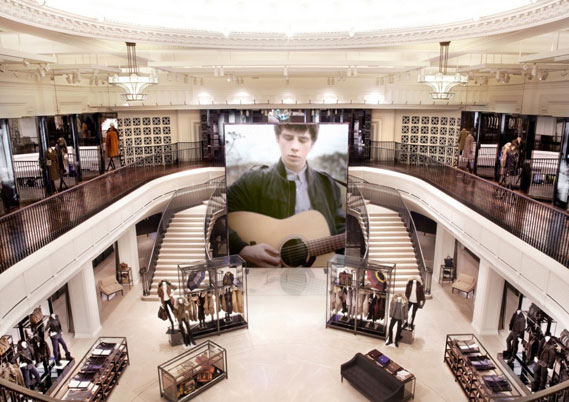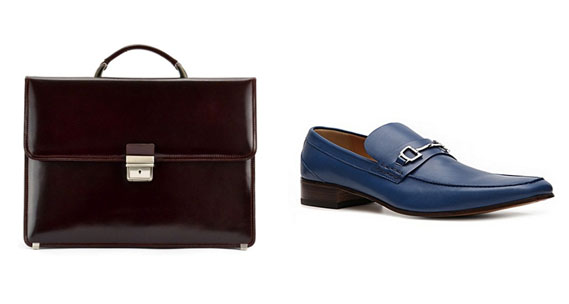The core challenge facing luxury brands in 2013, remains the same as earlier years. They must achieve the right balance between protecting the exclusivity that, to an extent defines luxury, and making the brand experience accessible to a wider audience. In addition luxury brands have to keep up with the shift to and the necessity of digital marketing while still holding on to their heritage and craftsmanship aspect.
The implications will vary from brand to brand but it is possible to identify five clear trends for luxury strategists
1. Marketing to the Millennial generation :
Every generation like an individual, has its own attitudes, values and even quirks. Millennials – are defined as the American teens and twenty-somethings currently making the passage into adulthood. Their identifying traits are the absorption and adaptation of technology and social media into their daily lives, as well as strong confidence both in the future and in themselves.
The main trait of the millennial generation across the world is that they are extremely “connected” 24×7. In India too the past few incidents have shown the enormous power this same age-group has to garner people from all walks of life , impact opinions and contribute in making concrete amendments just by networking through their different social platforms like Twitter, Facebook etc.
For marketers, the growth of e-commerce planned by many Indian companies is based on targeting to this generation. 2013 will see a planned emphasis by luxury marketers to target this group in intelligent and novel ways. The generation of today is as comfortable shopping online as well as offline and can be connected easily and converted into loyal patrons through social networking if done so wisely. Of course, the luxury brands are now making a deliberate effort to target them not just through marketing techniques but also through new product launches which appeal to their sensibilities.
2. Unified approach to media planning:
The main trend we will notice is a comprehensive and unified media planning. We have already placed importance on a social media press release (covered on Monday, December 10, 2012). In addition, luxury marketers have to understand that the new young luxury brand shopper is very different in not just their choice of products but also in their choice of media. So it’s important to plan a media mix keeping in mind different set of shoppers for the same brand. Marketing strategy has to keep in mind cross-media strategies involving social media and traditional marketing media avenues.
Luxury brands like Ralph Lauren and Cartier have used this unified marketing approach extremely well by targeting affluent customers via different marketing platforms. More such examples will emerge in 2013. It’s important that on each platform, brands engage current and new customers in a discussion and create different experiences for them. Marketing through magazine advertorials is very different than sending them e-mailers or connecting to them through Facebook but all avenues have to be explored depending on the target customers
3. Providing a richer product experience through mobile medium, RFID, shotcodes and augmented reality an essential channel of marketing in 2013
In 2013 it will be imperative to incorporate convenience and speed on the mobile medium into the overall marketing approach of luxury brands. Interesting, way of life phone apps will become a norm and a necessity. The changes come as affluent consumers have been actively using their mobile devices to study products, make purchases and connect with brands. Of course with the introduction of tablets—a new media rich with display capabilities has opened up giving luxury marketers a new method to showcase their products and market in an interactive way.
Not only this, the coming year will see the advancement of the physical store by combining it with the digital media to provide an enhanced reality experience which is sure to amaze, impress and ensure that your consumers keep coming back for more. Burberry has already taken steps towards this and beautifully managed to integrate both in their flagship store in London which offers full length screens which convert into mirrors when needed, entertaining and engaging elements like electronically orchestrated ‘digital rain showers’ timed to occur, along with multi-media content such as a catwalk clip of your item to be triggered when placed near a mirror.
4. E-commerce
A brand like Tory Burch has been selling more online than through its stores.
More luxury brands will embrace ecommerce as a marketing strategy. Markets like India and China will have ecommerce growing rapidly. Brands benefit through ecommerce as they can reach out to customers in small towns and cities (like Ludhiana) where they don’t have stores but where luxury shoppers exist. No wonder you have online sites like Elitify.com who is positioned as India’s premier style lounge. They have hand-picked highly sought-after products from all over the world for their consumers, so whether there is a specific Gucci Loafer (image given below) that you are eyeing for your boyfriend or that sleek business bag from Brussardo (image given below) you want to gift your husband you can do so just by longing on to this site.
Elaborating on the same Amit Rawal, Founder and CEO www.Elitify.com says: “We are bullish about the growth of luxury market in India. Currently it is small but growing steadily. In general though there is a huge appetite in this country for luxury / premium products and if the e commerce players can successfully deliver a great customer service experience, then online procurement of these products will become a strong phenomenon considering the fundamentals that are fueling the e commerce growth.”
5. Customer relationship Management
It’s a known fact that a successful luxury brand is not just an exclusive product—it’s a combination of high-end products as well as exceptional service. 2013 the focus will be on customer service not just through exceptional store experience but also through other marketing platforms.
According to Anita Kataria from “The Right Address” a luxury home decor store, that sells brands like Moser crystal and Bernardaud porcelain–Customer Relationship Management is an area that one has to shine the most in when referring to Luxury Brands. Very few brands do proper clientele dealing, surprisingly of what actually is expected to be a special experience or special attention given to every single client who should be made to feel out of the ordinary. To build a good clientele, one has to evolve own methods of satisfying a customer.
There are three main areas one has to focus on- A complete know-how on the brands that are represented by training the staff well, earning the trust of the customers and having a pleasant personality and presenting oneself in a cordial manner to each and every customer with immense amount of patience. Direct interaction with clients on a personal level would be a good approach to a healthy customer relation.
Because luxury consumers demand special services, brands moving to mobile must figure out how to use apps to extend their relationship with the customer. Loyalty programs and early access to sales are some of the ways that help build and maintain customer relationships through digital media. In addition the evolution of the fitting room: augmented reality browsing and customization will increase. So will facilitating social shopping: getting a second opinion in real-time
Whatever strategy is adopted by luxury brands in 2013, one thing is for sure, and they definitely will be connected to their customer as that is the future!




